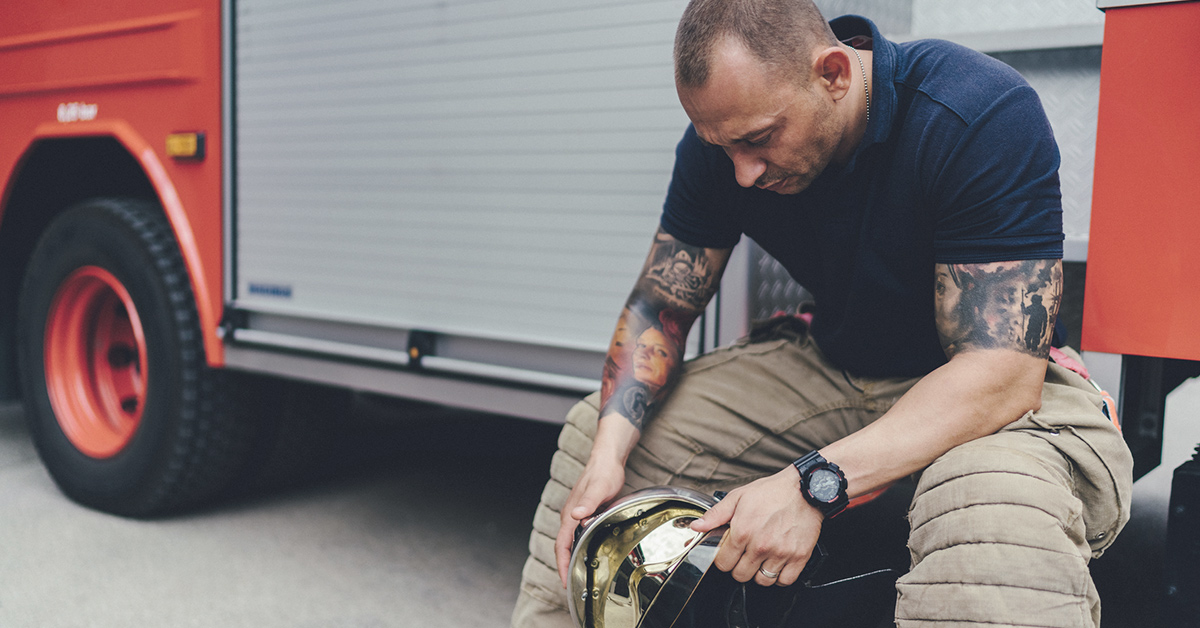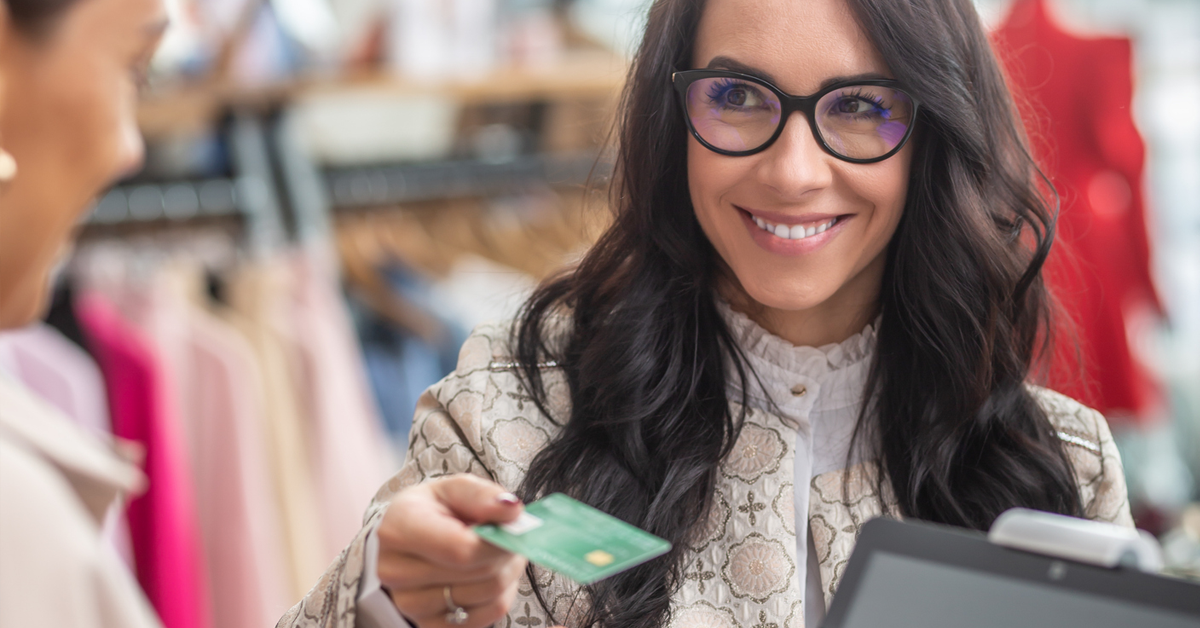The coronavirus has turned the world upside down, and everyone is struggling to adapt. As we face the fallout and search for ways to survive, what role do brands play in helping us, and what do we expect from them?
And if you belong to a group that has been directly impacted by the pandemic, are your expectations different, and if so, how?
To find out, we surveyed 2,399 people in the consumer communities that the coronavirus has pushed to the front lines or impacted disproportionately: nurses, first responders, teachers, college students, seniors, and military members. And their answer seemed clear. They want brands to show up for them with meaningful support.
A Precarious Emotional State
Not surprisingly, our survey revealed that consumers in the hardest hit groups are worried. Fifty-five percent of all respondents said the pandemic has made them anxious, and that number is even higher for nurses (61%) and teachers (63%).
Forty-five percent of all respondents also reported feeling frustrated. And many (40%) are feeling overwhelmed. The weight of the pandemic is weighing most heavily on teachers and students (50%), first responders (46%) and nurses (49%). Surprisingly, seniors were the least overwhelmed (20%).
What these groups weren’t feeling was assured. Less than one in four of all the consumer communities felt confident.
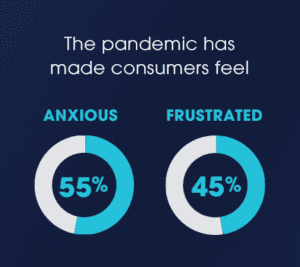

How Consumers Want Brands to Help
The consumer communities we surveyed want brands to do good and care for people.
When asked how brands can help, 68% of all respondents said they wanted brands to donate to programs that provide direct support for medical workers, and 67% wanted brands to donate to people who have lost wages. And when you look at the data more granularly, the numbers rise.
Seventy-two percent of nurses and 74% of seniors want brands to donate to programs that support healthcare professions. And 69% of teachers and 74% of seniors want brands to donate to programs that provide urgent medical supplies.
All the groups also want brands to help prevent infections. More than half of those surveyed wanted brands to explain what measures they’re taking to mitigate the spread of the virus, with seniors (60%) wanting those explanations the most.
What makes all this even more striking is that survey respondents rated these actions that serve the greater good higher than receiving a personal cost savings. Across all communities, only 53% said they would know a brand cared if it gave them a discount.
But that doesn’t mean they wouldn’t appreciate a little financial relief. When asked directly if they wanted to receive a discount within the next 90 days, 88% said yes.
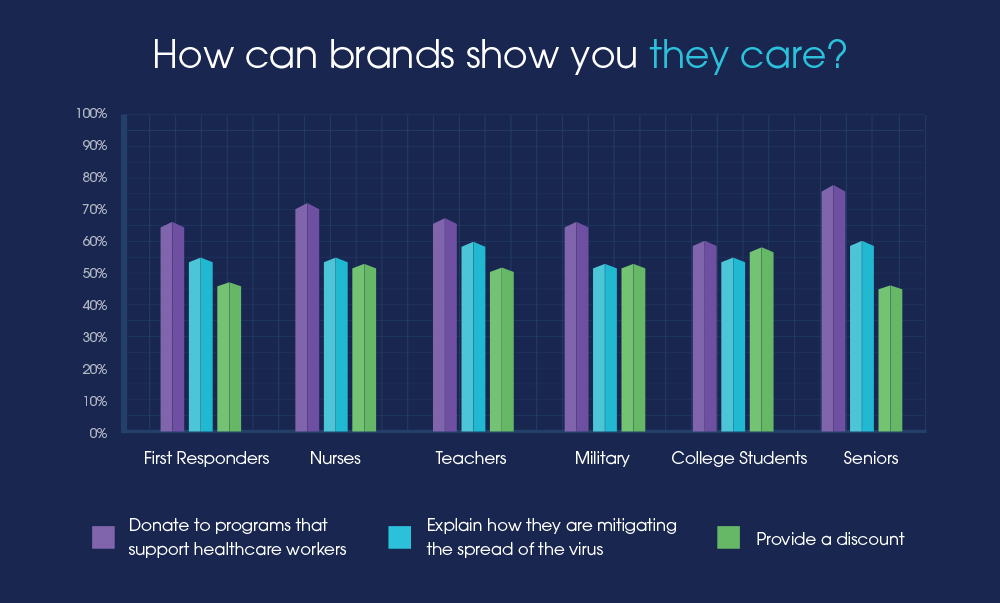

How Brands Can Make an Impact with Personalized Offers
Brands can provide institutional support through donations and clear protocols to protect consumer safety. But the best way to provide support to individuals in these consumer communities is to create an offer just for them.
Examples of brands doing this are surfacing across industries. FabFitFun is giving nurses and doctors a free Healthcare Heroes bundle. Headspace is helping teachers and healthcare providers manage the stress of this crisis by giving them free access to its online meditation app. And Tuft & Needle is giving first responders a 15% discount on its mattresses.
Consumers in our survey strongly affirmed these actions. Across all consumer communities, 98% of survey respondents said they want to hear about promotions that were offered exclusively to people in their profession or life stage. And 89% said those personalized offers would positively impact their relationship with a brand.
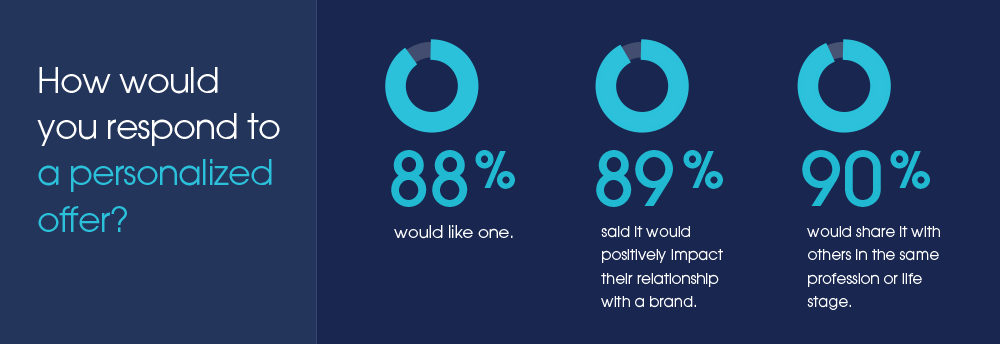

How Personalized Offers Make Consumer Communities Feel
Our survey revealed that personalized offers provide the kind of care that these consumer communities want from brands. More than 58% of nurses, first responders, teachers, seniors, and the military said personalized offers made them feel “valued.” And across all consumer communities, two-thirds or more said the offers made them feel “thankful.”
The survey also suggests that these consumers aren’t just looking for a great deal. Less than one in three consumers across all communities said the personalized offers made them feel “excited.”
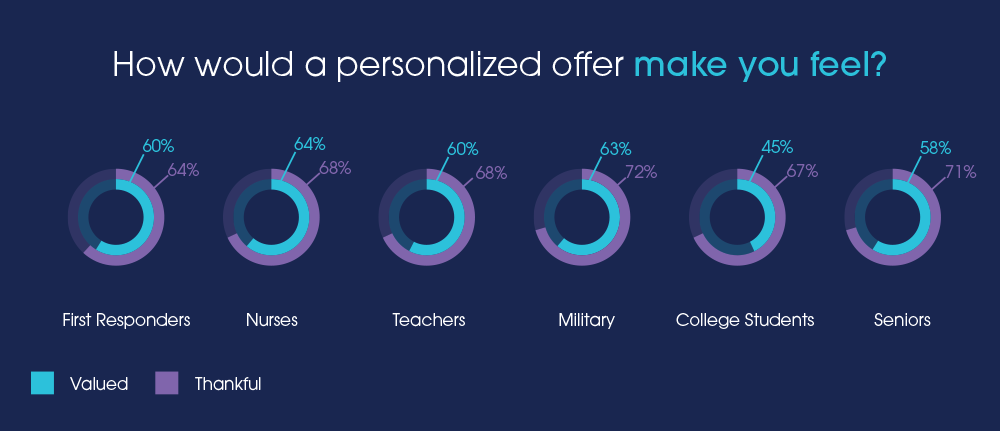

Consumers Want Meaningful Promotions
The consumers we surveyed were most drawn to personalized offers that provide tangible value. More than 60% of all groups said free shipping had the greatest appeal, and that number was even higher for students (65%), seniors (69%), and Teachers (68%).
More than half of all consumers said 20% off a purchase was the most appealing. BOGO was most popular among nurses (54%), seniors (52%) and the military (54%). And a free gift was the promotion most desired by college students (54%) and nurses (53%).
The promotions that didn’t appeal to consumers were just as noteworthy. Less than one-third of all respondents wanted upgraded loyalty status and additional customer service. And only 32% chose VIP experience. When it comes to making consumers feel supported, substance matters.
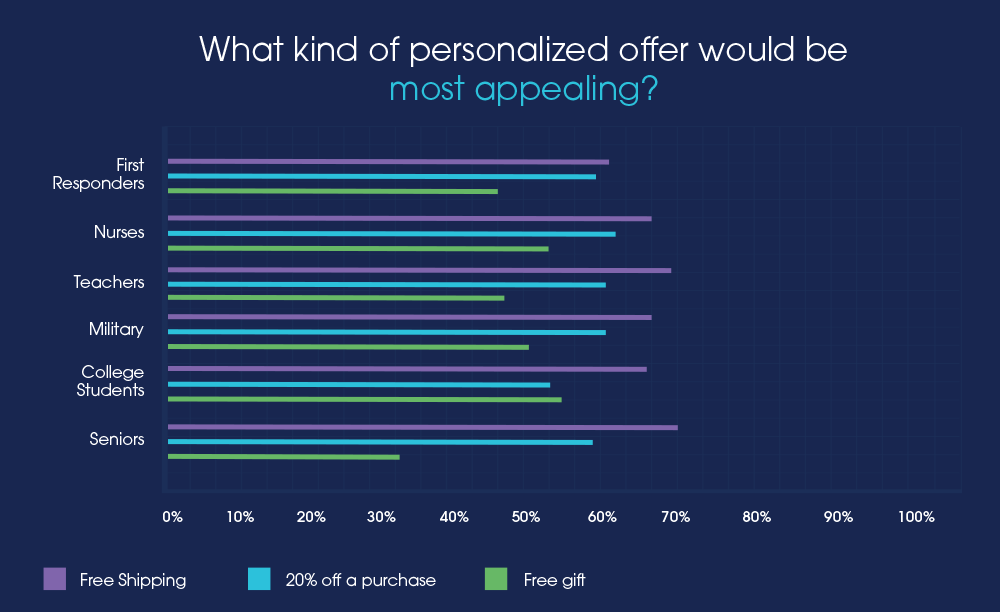

How Personalized Offers Impact Consumer Engagement
Providing a personalized offer to the groups hardest hit by the pandemic doesn’t just make them feel cared for, it can launch a new brand relationship.
One-third or more of all consumer communities said receiving a personalized offer would make them purchase from a brand they hadn’t shopped with before, with an even greater number of nurses (47%) and teachers (44%) saying it would trigger this response.
Personalized offers can also deepen their relationship with a brand. More than half of all the consumer communities said receiving a personalized offer would make them shop at a brand more frequently.
And a personalized offer can inspire consumers to elevate a brand. More than 60% of all consumer communities said a personalized offer would make them promote that brand to friends and family.
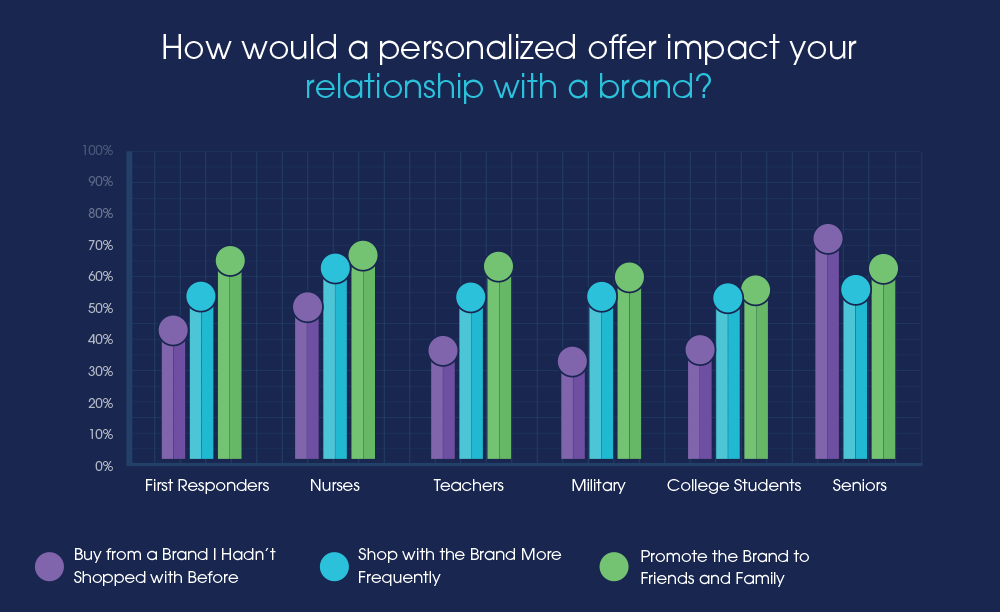

Personalized Offers and Helping Others
The consumer communities we surveyed have strong networks. Members of these groups look out for each other, and when something like a personalized offer comes their way, they want to be sure it benefits their entire group.
Our survey revealed that after receiving a personalized offer, more than 90% of all the consumer communities would share it with others they knew were eligible for it.
The channels they would use varied, but a majority of nearly all the consumer communities said they would share their personalized offer by text and through social media. The one exception was seniors. Their preferred method was to forward an email (59%).
And even with social distancing, these groups are connecting live. More than one-third of all consumer communities also said they would share a personalized offer in person, with an even higher percentage of first responders (52%) and nurses (54%) using that means of exchange.
Acting with Compassion and Purpose Will Last
In times of uncertainty, consumers want brands to deliver experiences that meet their new needs with empathy, care, and concern. And for the consumer communities most impacted by the coronavirus, these feelings are even more acute.
Brands that want to make a difference to these groups need to show up for them directly with programs that say “We see you—the work you’re doing and the unique struggles you face. And we want to help.”
Companies that offer this support in ways that have real value won’t just stand out to these consumers now, they’ll be the ones these consumers turn to when the crisis has passed.

